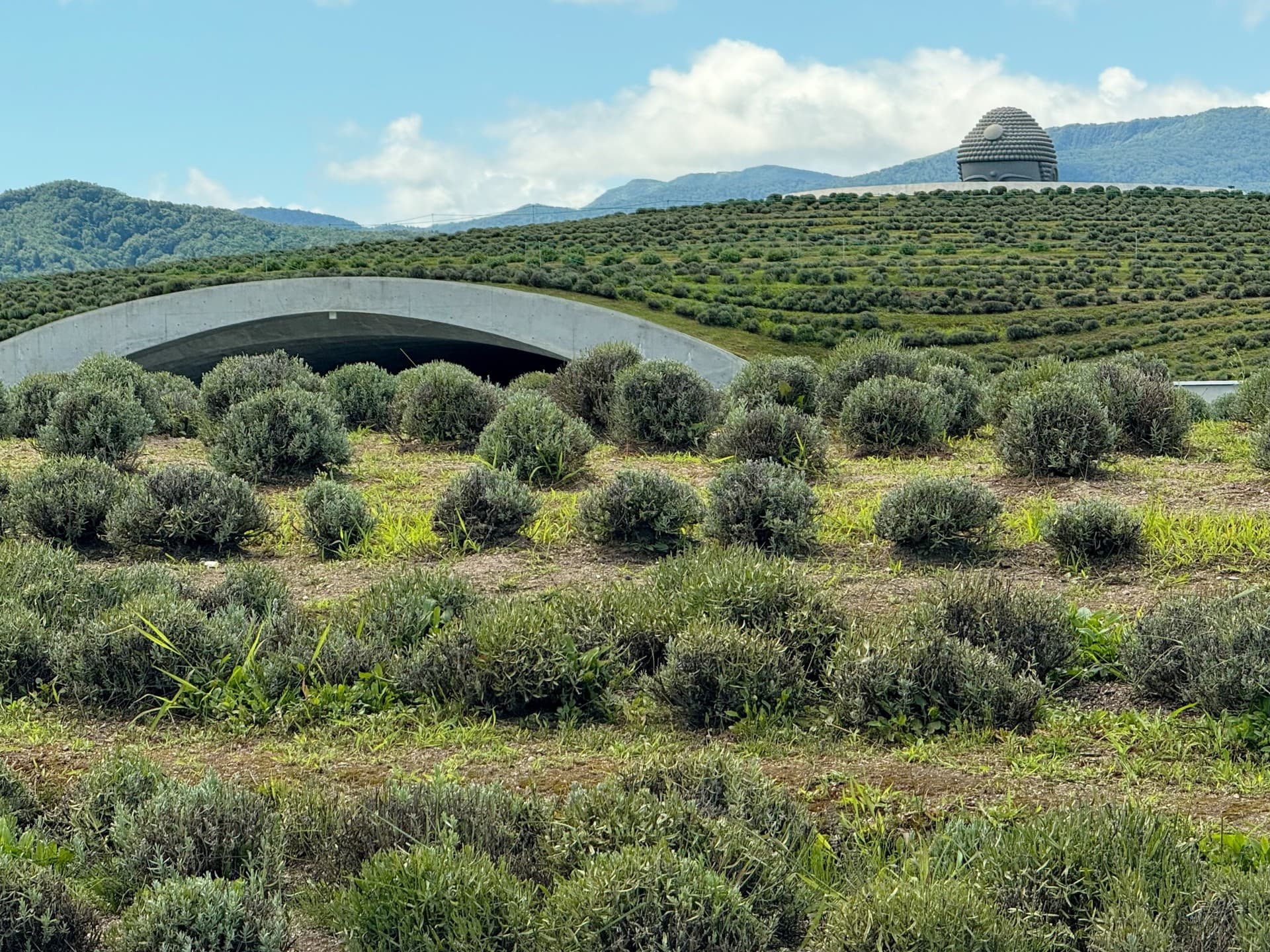A thousand years old floating temple on Lake Biwa
Ukimido, a floating temple on Lake Biwa has inspired poets and artists since ancient times.
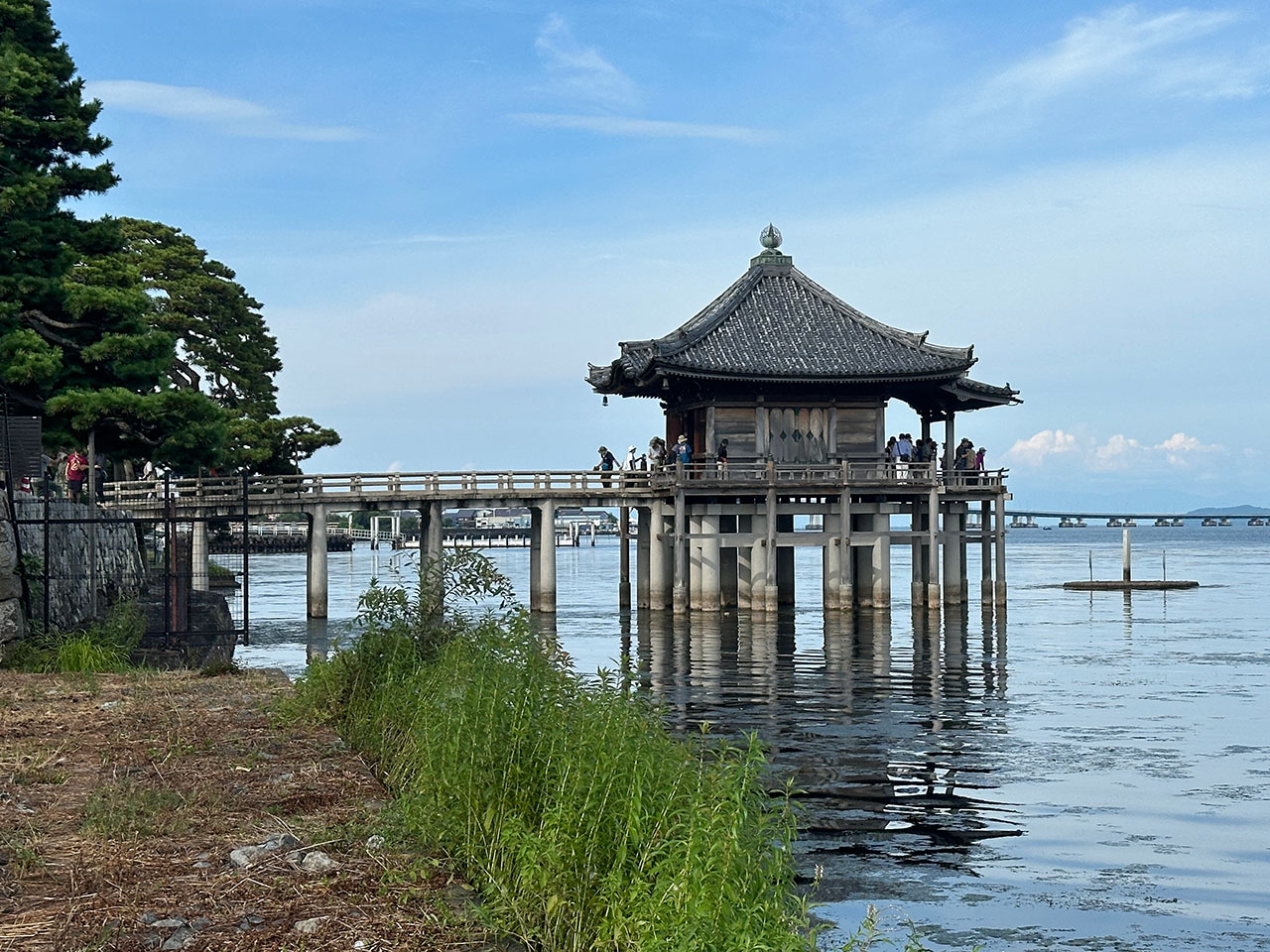
Click here to watch the video of Ukimido on my YouTube channel
If you explore the shore of Lake Biwa, the largest freshwater lake in Japan, you’ll discover many scenic spots. One of these is in the city of Katata in Shiga Prefecture. About a 15-minute walk from Katata Station, you’ll find a temple called Ukimido, officially named Kaimonzan Mangetsu-ji. What makes this temple unique is its wooden “floating hall,” built on pillars over the lake. The temple was originally constructed over a thousand years ago, in 995. The story goes that the priest Genshin of Mount Hiei built this temple with a thousand Buddha statues (yes, a thousand!) as a navigational landmark, praying for safe travel on Lake Biwa and the salvation of all living beings. Inside Kannon-do Hall, there is an almost 1,000-year-old seated Buddhist statue of Sho Kannon, the Goddess of Mercy, which is considered an important cultural property of Japan.

The scenery at Ukimido has inspired poets and artists since ancient times. Many famous poets and artists, such as Matsuo Basho, Kobayashi Issa, Takahama Kyoshi, Utagawa Hiroshige, and Katsushika Hokusai, visited here and left behind poetry and artwork. If you look out over the lake from the Ukimido floating hall, you’ll notice a stone pillar protruding nearby from the lake. This is a stone monument inscribed with one of Kyoshi’s haikus: Mizumi mo kono atari ni shite tori wataru, meaning “Birds cross over around here on the lake.” Additionally, there is also a monument on the temple grounds with a haiku by Matsuo Basho that reads, Jyou akete tsuki sashiireyo Ukimido (Unlock the chains and let the moonlight into the Ukimido).
The present Ukimido was rebuilt in 1937 after suffering severe damage from the Muroto Typhoon in 1934. Restoration work was carried out again in 1982, when the pillars supporting the hall were replaced with concrete to minimize the risk of corrosion and collapse due to wind and rain.
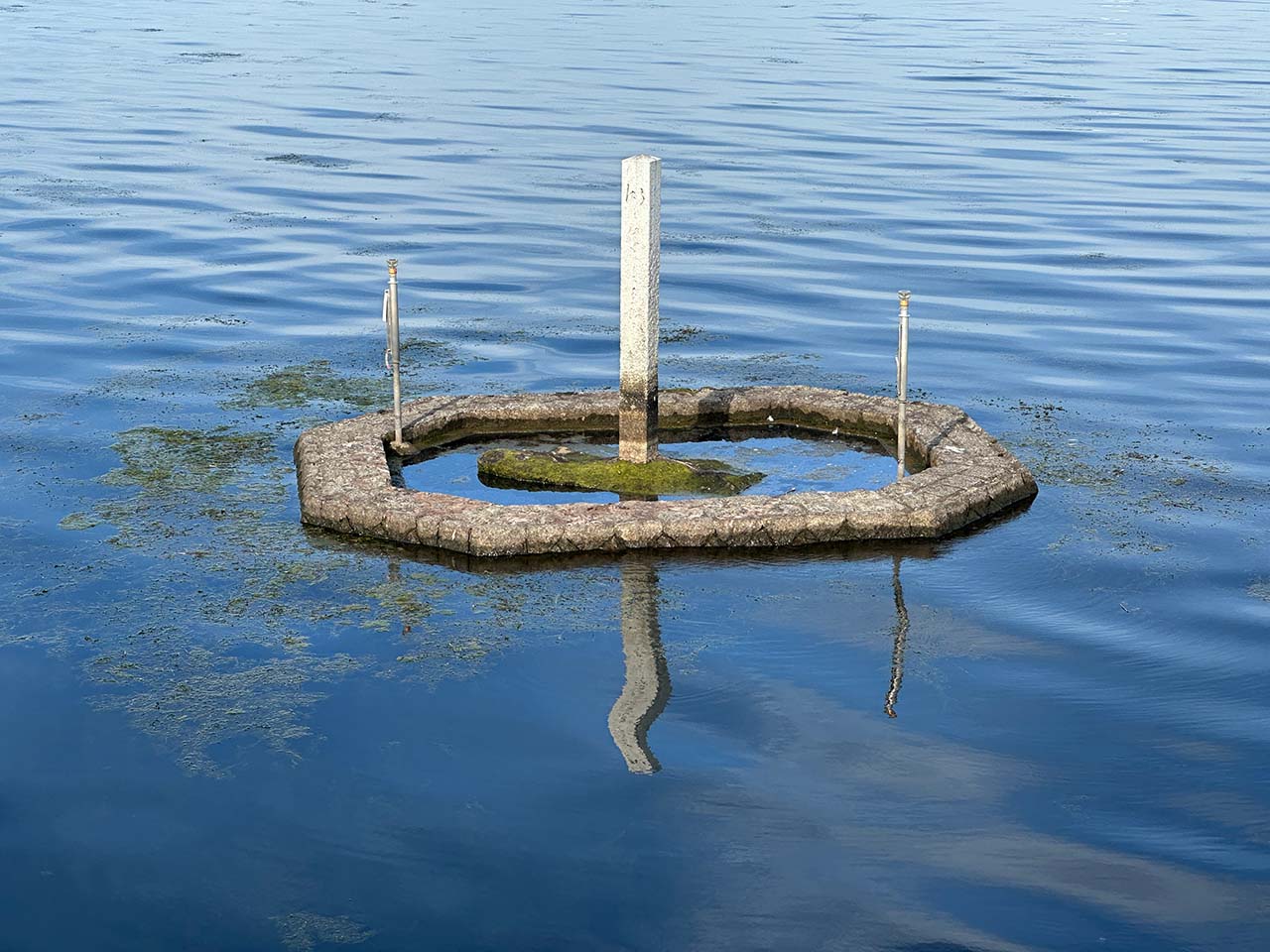
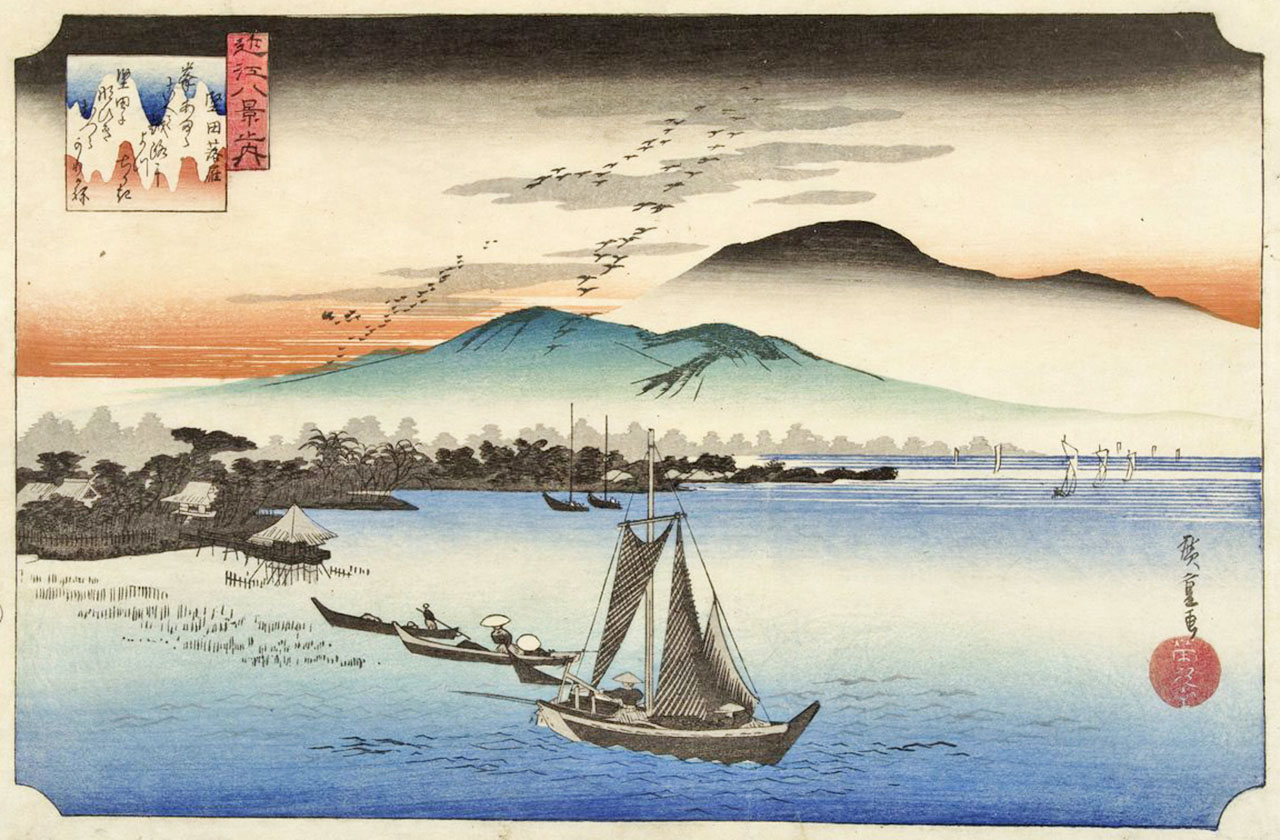
Despite its impressive appearance, Ukimido is not widely known across Japan, but since the Edo period, it has been regarded as one of the eight most scenic places in the Omi area of Shiga. When I visited, there were only a handful of visitors—just me, and maybe four or five others. Occasionally, larger tour groups pop by, but they usually leave faster than you can say “konnichiwa”. So, if you have the time and stay long enough, you might find yourself alone at the temple, especially around closing time in the late afternoon.
As the sun sets, Ukimido takes on a very serene atmosphere. While I waited for darkness to fall, I watched a flock of small birds fly back and forth across the bridge, as if they were undecided about which side had the better view, all while cicadas sang their summer anthem in the hot and humid evening air.
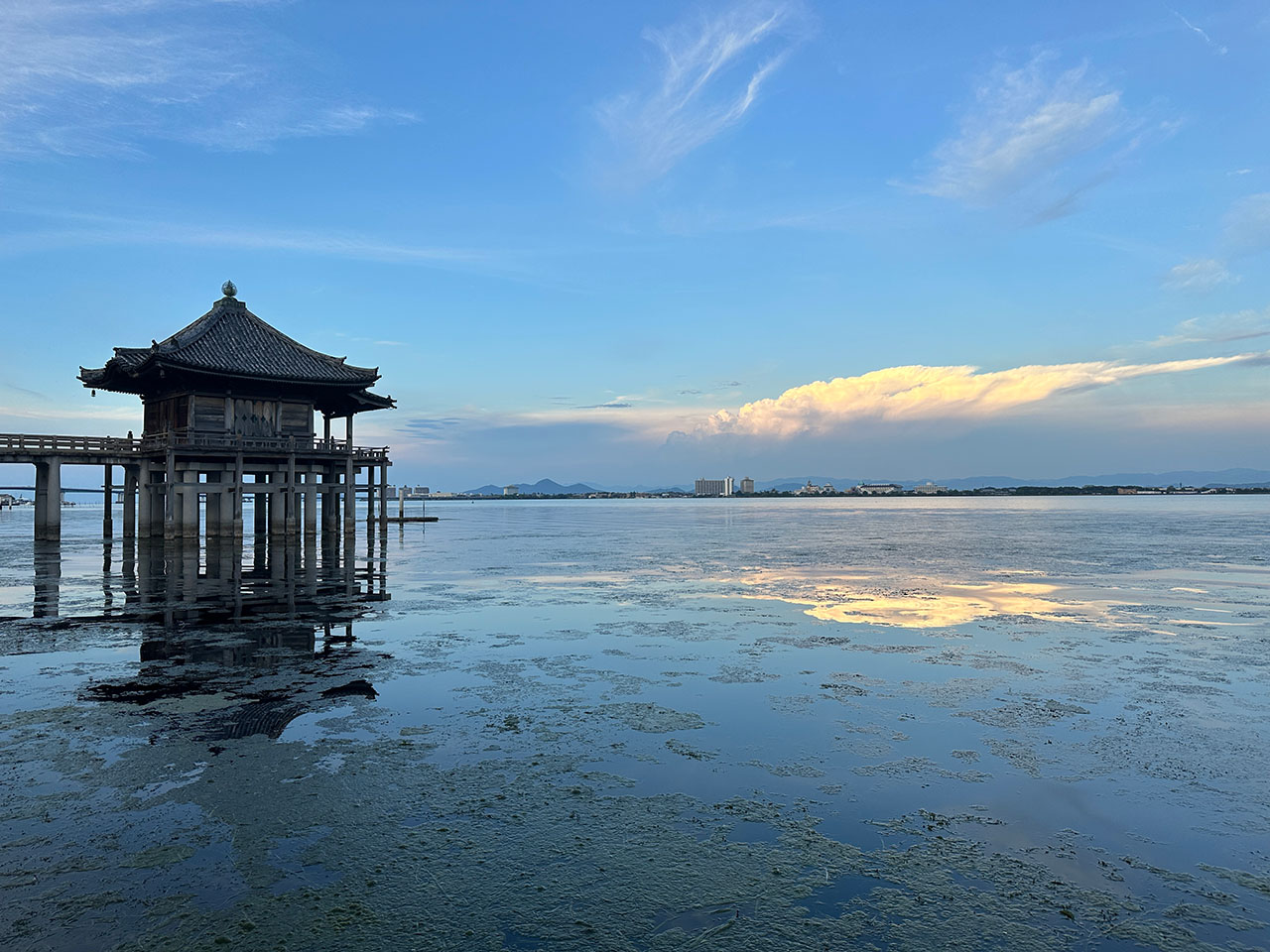
![[Photos] Autumn Colors at Kotokuji Temple](/_next/image?url=https%3A%2F%2Fsgp1.vultrobjects.com%2Fpfj-static%2F2025%2F11%2FIutHLn2g-02.webp&w=3840&q=75)
![[Site Update] Goshuin Collection](/_next/image?url=https%3A%2F%2Fsgp1.vultrobjects.com%2Fpfj-static%2F2025%2F11%2FIMG_3251.webp&w=3840&q=75)
